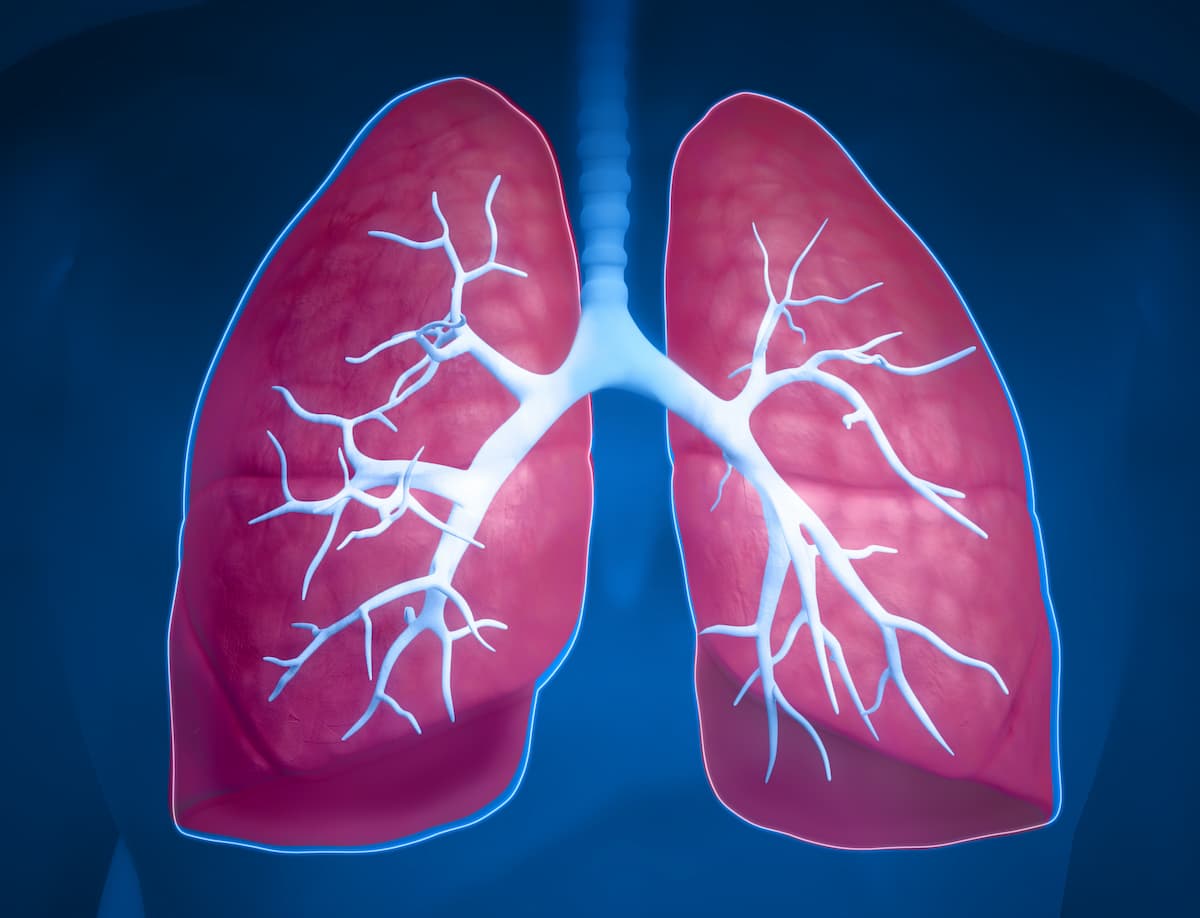Ivonescimab/Chemo Shows Promising Anti-Tumor Activity in NSCLC Subsets
Intracranial disease control with Ivonescimab plus chemotherapy appears encouraging in patients with non–small cell lung cancer and brain metastases.
Developers are currently assessing ivonescimab in patients with NSCLC across 4 phase 3 trials. These trials include HARMONi (NCT05184712), HARMONi-2 (NCT05499390), HARMONi-3 (NCT05899608), and HARMONi-5 (NCT05840016).

Combining the investigational bispecific antibody ivonescimab with chemotherapy elicited promising anti-tumor activity and tolerability among patients with advanced non–small cell lung cancer (NSCLC), including those with brain metastases, according to findings presented at the 2024 European Lung Cancer Congress.
Findings from one poster presentation included patients who received ivonescimab monotherapy (n = 7) in the phase 2 AK112-202 trial (NCT04900363) or those who received the agent in combination with chemotherapy (n = 28) as part of the phase 2 AK112-201 study (NCT04736823).1 The intracranial response rate was 39% in patients who received ivonescimab/chemotherapy per Response Assessment in Neuro-Oncology (RANO) criteria, which included complete responses (CRs) in 25%. Additionally, an intracranial response occurred in 14% of those who received ivonescimab only, which consisted entirely of CRs.
Across patient cohorts in both trials, the median intracranial progression-free survival (PFS) was 19.3 months. Investigators observed a strong correlation between intracranial and extracranial/overall responses.
Regarding safety, there were no instances of intracranial bleeding in those with pre-existing brain metastases. Additionally, grade 3 or higher treatment-related adverse effects (TRAEs) affected 31.4% of patients (n = 11/35), and grade 3 or higher treatment-related serious AEs occurred in 20% (n = 7/35).
The aforementioned phase 2 trials included patients who were 18 to 75 years old with advanced NSCLC of any histology and PD-L1 expression. Patients received ivonescimab at 20 mg/kg every 3 weeks alone or in combination with platinum-based chemotherapy for 4 cycles.
Two independent neuroradiologists evaluated brain metastases for intracranial responses based on RANO criteria, and a third neuroradiologist based in the United States adjudicated their findings if there was discordance in the first readings.
Investigators also presented updated results from the AK112-201 trial, specifically data concerning patients with squamous and nonsquamous advanced or metastatic NSCLC without actionable genomic alterations, as part of a second poster session.2
Among patients with nonsquamous histology (n = 72) and squamous disease (n = 63), respectively, the ORR with ivonescimab plus chemotherapy was 54.2% (95% CI, 42.0%-66.0%) and 71.4% (95% CI, 58.7%-82.1%). Additionally, the disease control rate (DCR) in each respective cohort was 95.8% (95% CI, 88.3%-99.1%) and 90.5% (95% CI, 80.4%-96.4%), and the median duration of response (DOR) was 15.4 months (95% CI, 11.1-17.9) and 12.7 months (95% CI, 8.1-not evaluable [NE]).
The median PFS was 11.1 months (95% CI, 9.5-16.3) in patients with squamous NSCLC compared with 13.3 months (95% CI, 8.3-16.4) in those with nonsquamous histology. The estimated PFS rate at 9 months was 65.1% (95% CI, 51.2%-75.9%) and 58.9% (95% CI, 46.5%-69.4%) in each respective cohort. Additionally, the median overall survival (OS) was NE in the squamous (95% CI, 22.5-NE) and nonsquamous (95% CI, 17.5-NE) cohorts, with estimated 9-month rates of 90.4% (95% CI, 80.0%-95.6%) and 81.9% (95% CI, 70.9%-89.1%) in each respective cohort.
In the nonsquamous and squamous cohorts, respectively, safety findings included reports of grade 3 or higher treatment-emergent AEs (56.9% and 66.7%), grade 3 or higher TRAEs (25.0% and 44.4%), and TEAEs leading to discontinuation of ivonescimab (2.8% and 11.1%). Frequent TEAEs included anemia, neutrophil count decreases, and hypoesthesia in the squamous cohort, while those with nonsquamous histology experienced anemia, constipation, and neutrophil count decreases.
In cohort 1 of this phase 2 trial, patients received ivonescimab plus pemetrexed at 500 mg/m2 and carboplatin area under the curve 5 in the nonsquamous group or ivonescimab plus paclitaxel at 175 mg/m2 and carboplatin area under the curve 5 in the squamous group.
Developers are currently assessing ivonescimab in patients with NSCLC across 4 phase 3 trials. These trials include HARMONi (NCT05184712), HARMONi-2 (NCT05499390), HARMONi-3 (NCT05899608), and HARMONi-5 (NCT05840016).
“We are pleased to see ivonescimab’s favorable intracranial response rates and median intracranial [PFS] as well as promising anti-tumor activity and safety profile in the subgroup of patients with brain metastases from NSCLC,” H. Jack West, MD, vice president of Clinical Development at Summit, said in a press release on these poster sessions.3
References
- Zhang L, Zhou C, Fang W, et al. Intracranial activity of ivonescimab alone or in combination with platinum doublet chemotherapy in patients with advanced non-small cell lung cancer and brain metastases. Presented at the 2024 European Lung Cancer Congress; March 20-23, 2024; Prague, Czech Republic. Abstract 174P.
- Zhang L, Fang W, Zhao Y, et al. Phase 2 results of ivonescimab a novel PD-1/VEGF bispecific in combination with chemotherapy for first line treatment of patients with advanced / metastatic squamous non-small cell lung cancer. resented at the 2024 European Lung Cancer Congress; March 20-23, 2024; Prague, Czech Republic. Abstract 68P.
- Promising intracranial anti-tumor activity and safety data for ivonescimab in NSCLC patients with brain metastases featured at ELCC 2024. News release. Summit. March 22, 2024. Accessed March 26, 2024. https://tinyurl.com/39xfe7zz
Newsletter
Stay up to date on recent advances in the multidisciplinary approach to cancer.




